In a nutshell, the planet earth is experiencing climate changes, a menace depleting the ozone layer and causing a detrimental effect on plants and animals.
Consequently, many areas in the world are witnessing different and difficult seasons, making farming and pastoralism arduous. Thus, apartment farming is becoming an immediate problem solver.
Ideally, there’re many reasons to settle for apartment gardening. For instance, apartment gardening can offer solutions for fresh and bountiful kitchen herbs and vegetables.
Also, apartment gardening can serve as a learning center in the homestead for preschoolers. Besides, apartment gardening creates a refreshing and appealing aura of green herbs and vegetables that brings comfort.
Therefore, dig more into apartment gardening to understand the ideal space, tools, environments, advantages, and disadvantages of apartment gardening.
Table of Contents
What is Apartment Gardening?
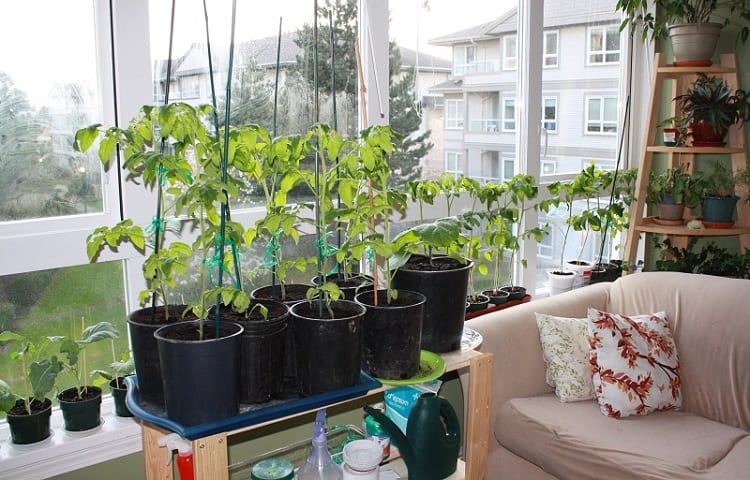
In layman’s language, apartment gardening is planting vegetables and fruits at areas aligned to the apartment.
Maybe the sunny windows of your apartment or the patio and even the balcony, apartment gardening is possible. Again, avoid underestimating your minimal fire exit area since it can be the deal marker in successful apartment gardening.
Besides, when it comes to apartment gardening, space does not matter. What matters is working smart to utilize the available space in creating successful gardens. In such circumstances, you need to invest in the right information about the tools required, viable vegetables, and conditions favorable for supporting plant life.
They say curiosity killed the cat, but in your case, it’ll save you by working on subtle ideas to hit the odds for apartment gardening.
So focus on what is needed to make an apartment garden.
What Do You Need to Make an Apartment Garden?
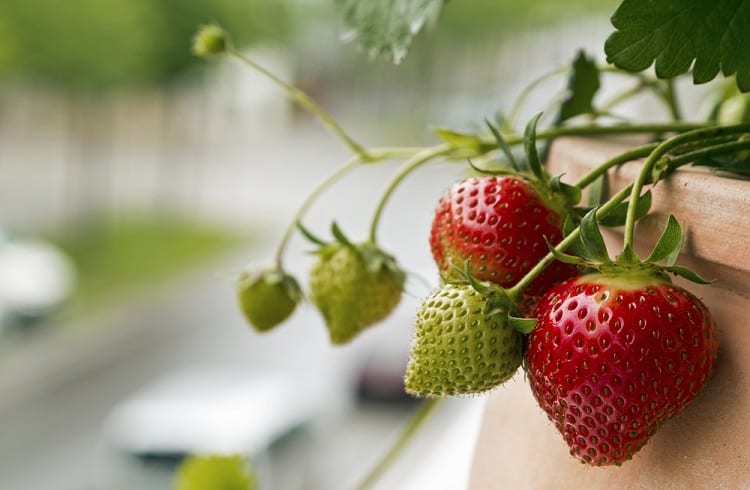
When it comes to selecting the ideal pots for the apartment garden, let your curiosity take charge.
Suggestively, you can settle for a rustic log-shaped to contain adequate soil for the plant. Remember, a log can align well with an earthly themed apartment.
You can also convert the wooden dining chair into a potholder and let the sitting area support the plant point, and a vintage color is better since it integrates well with gardening.
If not convinced of the examples above, then you can check at the colander planters. They come in different colors and shapes to suit your apartment gardening desires. Similarly, you can make unique concrete blocks to serve as the plant pots.
Such containers are elegant and can merge perfectly with the interior. The plastic laundry basket can work wonders to support the apartment garden since they have an excellent large surface area and very conducive spaces for growing plants.
Maybe elegance is part of you, and so not yet convinced about the pot choices above. In such circumstances, make a pot using chandelier themed decorations. You can do that at home or contract a specialist in designing apartment gardens.
Alternatively, convert that bath tap into an apartment garden holder by painting to get the desired appeal. After selecting the pot, the next is to understand how to choose the ideal space.
Ideal space
Choosing the ideal space is another crucial process before settling to sourcing materials for apartment gardening. So it starts with making decisions on which segment of the apartment you want for apartment gardening.
Measure out space and estimate the load it can contain. For instance, check if it’s possible to lay or hang pots on the balcony. But for those intending to retain sanity of their apartment, squeeze in the garden by using compressible containers or pots.
Also, the ideal space resonates with the type of apartment farming. For instance, planting fruits may require a space for the roots to spread out compared to growing vegetables.
Again, the conditions surrounding the apartment may help in determining the area. For instance, choose a location that minds the sunlight, the display, and the types of vegetables or herbs.
What Gardening Tools Will You Need?

Apartment gardening cannot be complete without unique and necessary gardening tools.
For instance, a hand trowel is handy. The device is similar to a shovel and very useful in digging holes or transplanting from one space to another.
Also, apartment gardening cannot work without a shovel. The tool is valid and contains a similar function to a hand trowel, though very convenient when harvesting soil from the field.
Plants tend to grow with weed. Whether at the apartment or in the backyard, you’ll have to deal with weed. Hand plucking is easy and convenient, but if choosy, then purchase an electric weed eater to trim and get rid of the weed in the apartment garden.
Most importantly, gloves are essential in apartment gardening. They not only protect your nails and but works perfectly for sensitive skin and hands. Again, some weeds or plants can be prickly or have allergic components, which you avoid by wearing hand gloves. Below is the discussion of the type of environment you need to create for the plants.
What Type of Environment Do You Need to Create for the Plants?
Just like oxygen supports human life, plants also require favorable conditions to support growth and development.
Thus, apartment gardening requires sunlight, humidity, and high-quality soil to support growth. Now catch up with the breakdown of the necessary environmental conditions for successful apartment gardening.
Sunlight

Sourcing for sunlight can be tricky when it comes to apartment gardening, and plants require direct sunlight to make food and support growth. Ideally, plants make food through a process called photosynthesis.
It means that the light converts the chlorophyll into energy and food for growth and development. So whether your space is the balcony or the windowsill, sunlight is a must.
Alternatively, you can use grow light to achieve the same needs as that of the sunlight. Grow light is useful and convenient but requires electricity, which is an additional bill. As discussed earlier, it’s imperative to analyze the ideal space for apartment gardening to avoid extensive costs that can be easily avoided.
Humidity
Planting personal gardens come with the advantage of cleanness, authenticity, and nutrition. Hence, it’s imperative to invest in clean and sufficient water for vegetables and herbs. You may need a watering can or a hand spray to always keep the vegetables misty and moisturized.
Remember, not all seasons are equal. You may need to water more often in the fall compared to winter. Fall seasons are scorching, which may not be sustainable for vegetables and herbs hanging on the exterior windowsill or the balcony. The trick is to water as many times as possible or change from the areas receiving scorching heat.
Remember, water is an essential component for a plant, just like you cannot survive without water, and so is the plant. Water helps in transporting the nutrients from the soil to the roots, branches, and leaves.
Thus, for quality apartment gardening, sufficient water is necessary. Next, the focus is on the quality of the soil.
Soil quality
The ideal apartment gardening cannot be complete without quality soil. Ideally, the soil has many uses in plant growth and development. For instance, soil acts as a buffer against diseases, pests, and winds.
It’s also through the soil that a plant firmly roots in the ground, assuming support and stability. Again, soil can equate to a stomach by carrying out functions such as retaining air, water, and nutrient for supporting the plant process.
Not all soil types are the best fit for apartment gardening. Organic and compost matter make quality soil that works better for the home gardens. They also create a sense of authenticity, taste, and nutrition in vegetables and fruits. So invest in organic soil, which is very quickly sourced by shredding leaves, branches, and roots mixed with typical soil to makes planting easy.
Benefits of Apartment Gardening

Apartment gardening has got some benefits as listed below:
- It requires a small budget to start and maintain apartment farming. Occasionally, you may need little cash to purchase fertilizer or watering equipment.
- Apartment gardening is private and long-lived.
- It’s easy to customize the plants to grow, depending on your tastes and preferences.
- Apartment gardening has enormous benefits in cutting costs while consuming small spaces.
- Apartment gardening showcases unique and attractive home settings.
- The plants and vegetables in apartment gardening offer a therapeutic environment for the sick and elderly.
- The plants and vegetables in apartment gardening create a cooling and refreshing ambiance.
- Also, the trees and vegetables regulate the flow of air in and outside the apartment. Such trees work magic in a congested urban center.
- Again, apartment gardening is a source of natural and fresh vegetables.
- It’s cheap to grow and sustain a healthy source of your vegetables.
- Apartment gardening can work as a hobby for the stay at home mums or work at home dads.
- You can customize the garden with your desired fruits and vegetables and use them to earn a living.
- Apartment gardening can be a motivating factor for children needing extra activity at home.
- It can be useful in learning and responding to some school assignments.
Drawbacks of Apartment Gardening
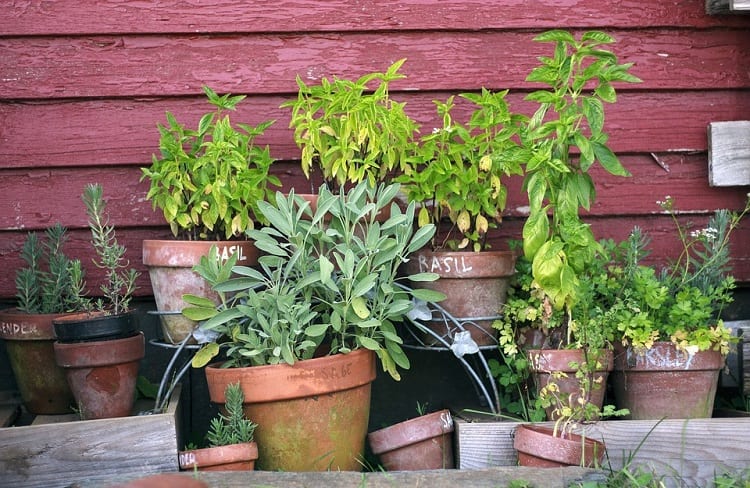
- It’s costly to start apartment gardening since the tools and equipment can amount to a high cost.
- Maintaining apartment gardening can be expensive since it requires more time to weed, prune, tame, and water.
- It can be time-consuming for busy people to erect an apartment garden.
- Confining a garden at home can be tricky on some occasions.
- Apartment gardening can fail just like other farming activities.
- You also require physical effort to support apartment gardening, which can be exhausting.
- It is time-consuming to start and wait for the vegetables and herbs plant grow.
- Apartment gardening is entirely dependent on the person, hence expensive to maintain.
- The use of artificial grow light can be expensive.
- You have to plan before going on vacation.
- It can be expensive to tame pets against tampering with the apartment plants.
- The selection of plants can be harmful to the body and the environment.
- It may take time to settle on the space and the types of plants to grow.
- Some plants may trigger allergy for other family members, so much caution is required when settling for apartment gardening.
What Are The Best Apartment Plants?
As discussed above, apartment gardening has its advantages and disadvantages.
Before settling and starting on apartment gardening, you have to decide on the preferred plants.
Some plants or vegetables can trigger an allergy in the family, while others can be susceptible to pets and pests. In this respect, check below on the best vegetables, herbs, and fast-growing plants for apartment gardening.
Vegetables
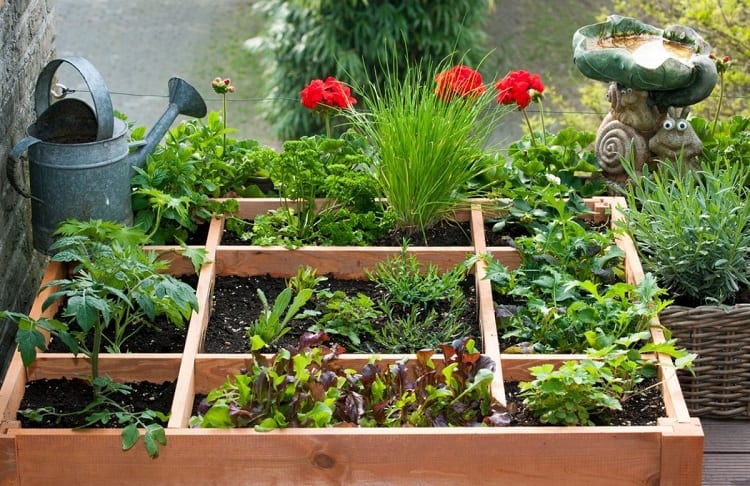
Nothing can be fulfilling than eating fresh vegetables from your apartment gardening. Thus, successful apartment gardeners should settle for vegetables with shallow roots and take little time to grow.
The shallow roots are advantageous in choosing the container and also making the space less messy. So select vegetables such as arugula, lettuce, or spinach. Such vegetables are very nutritious and cost-effective.
Herbs
Apartment gardening is ideal for kitchen herbs. For instance, thyme is a nutritious kitchen herb with an earthly flavor. Thyme takes less time to harvest and cook in daily meals. The herb does not stem out, requiring less space for growth.
Basil is another kitchen herb that you can expect in apartment gardening. The plant is not perennial and grows without requiring much effort. This herb easily resonates with many dishes, and it’s easy to grow and manage even in congested spaces.
Parsley is another easy to grow herb in apartment gardening. It takes little time to grow and uses considerable small space. By the way, parsley tends to grow generously and bountiful all year long. The herbs grow bushy and evergreen, which enhances the appeal of the apartment gardens.
Catnip is a useful herb for apartment gardening. It grows using less space and requires little time to develop, maintain, and harvest. Catnip has many medicinal benefits to the body, such as laxative and diuretic. Also, the herb has fantastic benefits in repelling rodents and insects in the house.
Fastest growing
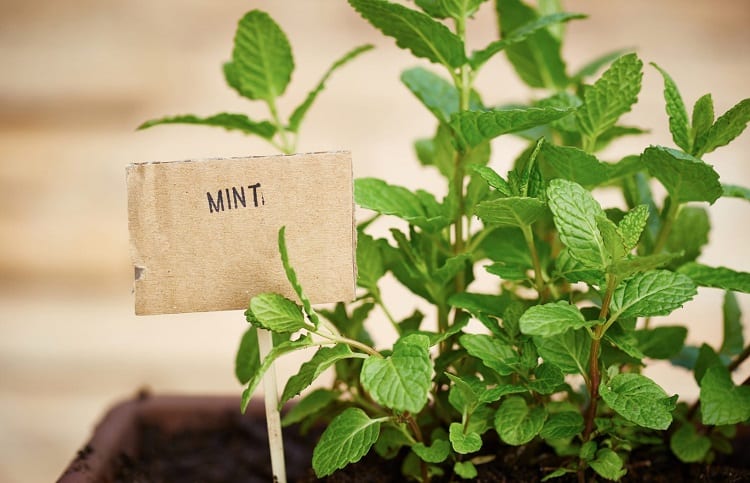
The fastest-growing herbs and vegetables take not more than three months to mature. Often a period of 2 to 3 months is enough for plants to fully mature. Thus, gardening vegetables such as arugula, lettuce, and spinach takes a little time to mature for apartment farming. A period of 4 weeks is enough to have your spinach for the first meal.
Carrots, parsley, and basil are quite addictive and take not more than three months to maturity. Nonetheless, many factors determine how fast vegetables and herbs are likely to grow in apartment gardening. So ensure the sunlight is sufficient and add enough organic compost for the most immediate results.
Can You Have An Apartment Garden in Winter and Fall?
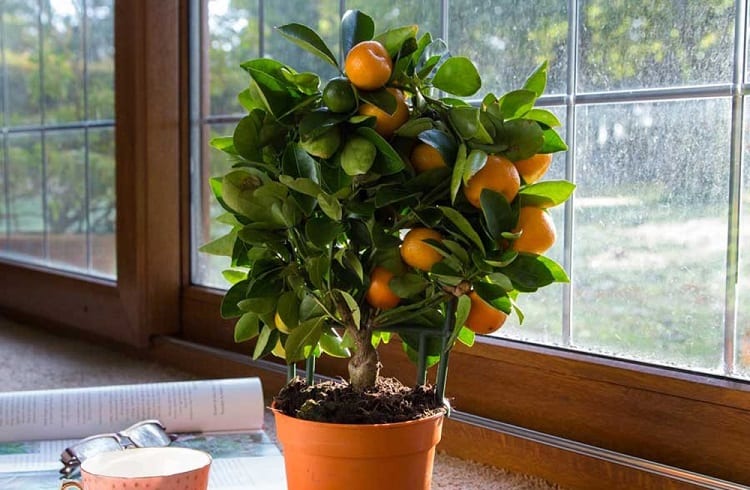
There is no specific period that you should grow an apartment garden.
Whether in winter or fall, you need to look for herbs and vegetables favorable in present conditions. Thus, during winter, you can grow apartment gardens as much as fall.
The only difference is that winter is a bit cold, requiring growing light and warming gadgets for the vegetables and herbs to undergo the normal growth processes. Notice that growing plants in winter can be more expensive and may take more time to mature than fall.
Bottom Line
Apartment gardening is easy or costly, depending on your approach.
So before resulting in apartment farming, take time and conduct background research of the soil, the vegetables and herbs, and water requirements. Carry out a thorough check of your spending to project whether any additional cost may be sustainable.
Nevertheless, apartment gardening may be expensive in the initial stages and turnout cheap and convenient later on. It’s vital to select pots that resonate with the apartment and the theme color. Notice a too busy or dull environment can be boring or disastrous in the homestead. So the choice of vegetables and herbs matters a lot.
Again, gather all the necessary tools for apartment gardening. Ensure all the needed equipment and farming devices are available. Also, train the pets and the children to handle the apartment gardening. Try to invest in plants that are friendly but not so appealing to the pet.
Finally, apartment gardening is ideal for sourcing fresh and nutritious vegetables at home. However, they can be a bit inconvenient if traveling since they need watering and weeding.
How is your apartment gardening? Can you advise someone to invest in apartment gardening? Why and why not. Share your experiences, challenges, and advantages of apartment farming.

